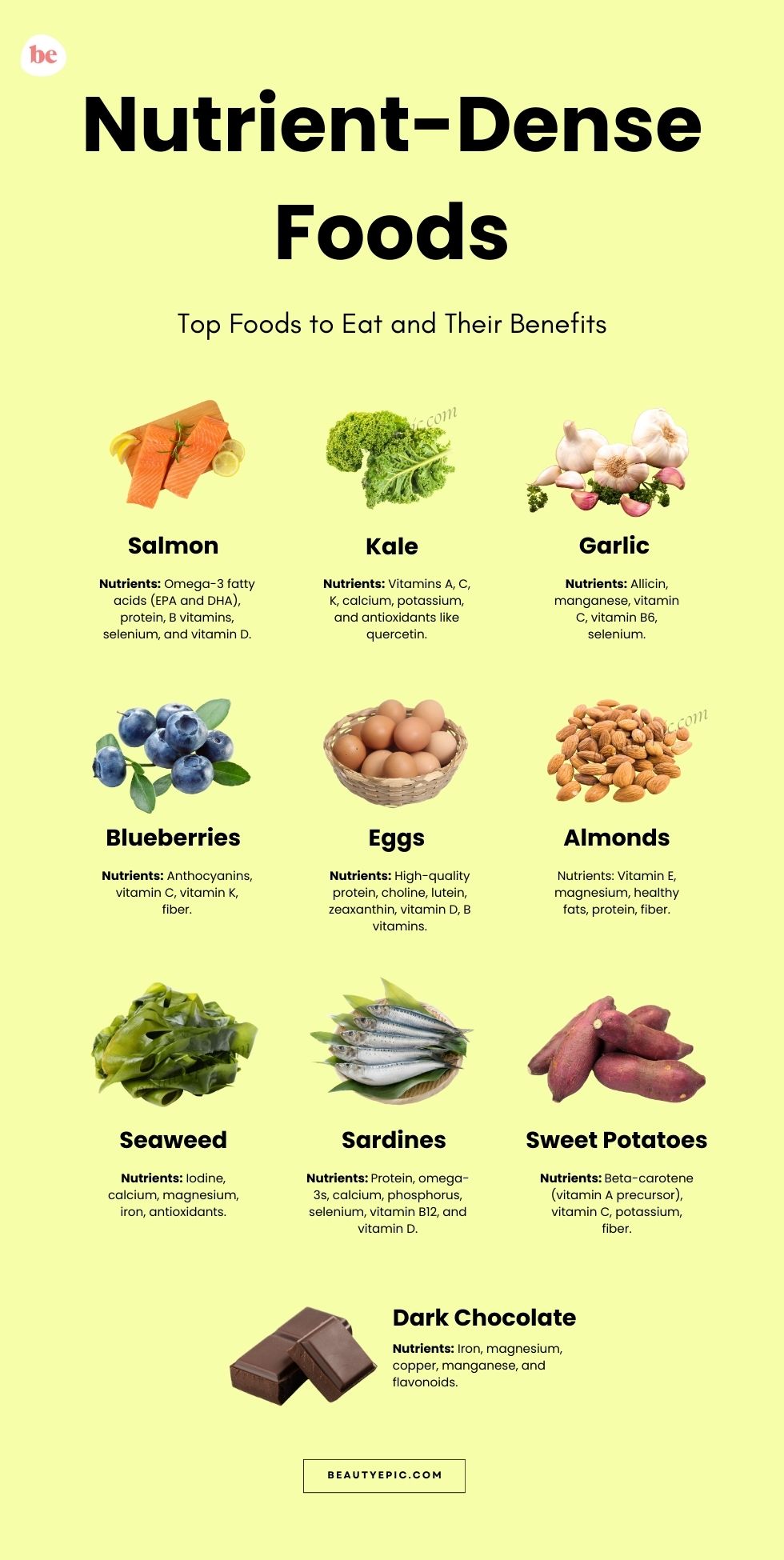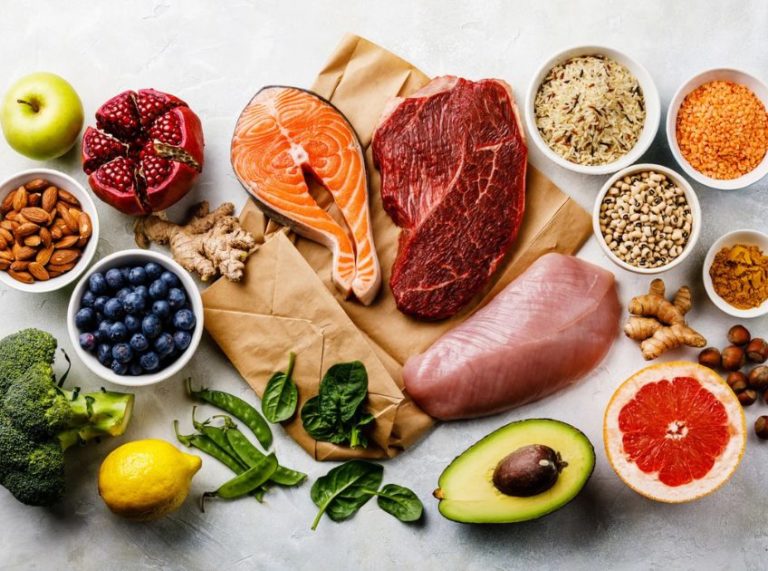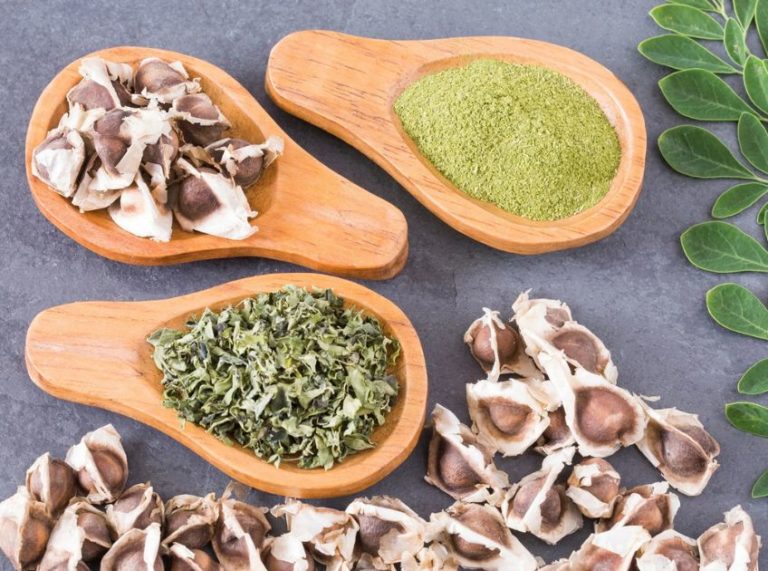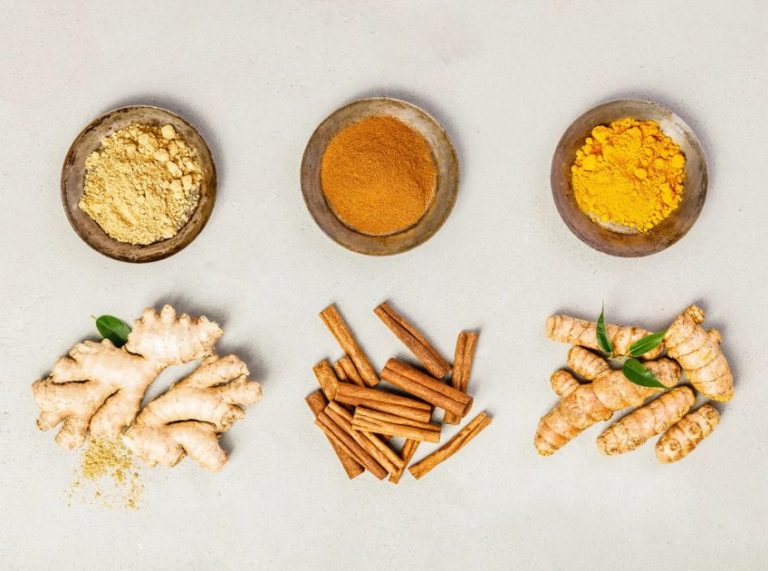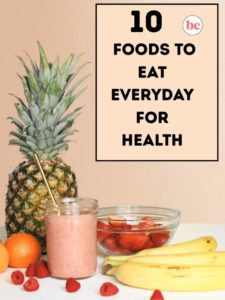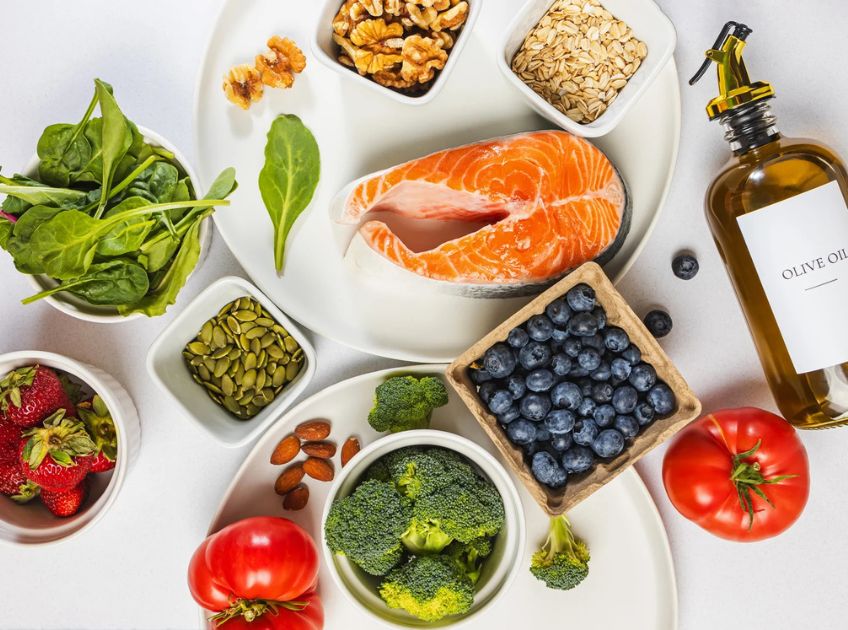
Important: This article is for informational purposes only. Please read our full disclaimer for more details.
Not all foods are created equal. While some may provide calories without much nutritional value, others are packed with vitamins, minerals, antioxidants, and essential fats in every bite. These are known as nutrient-dense foods—foods that deliver the most nutrition for the fewest calories.
Choosing nutrient-dense options can help you maintain energy, support healthy aging, and lower your risk of chronic diseases. Research published in the Journal of the Academy of Nutrition and Dietetics highlights that diets rich in nutrient-dense foods are associated with improved long-term health outcomes (1), including better cardiovascular health (2) and reduced inflammation.
The 12 Most Nutrient-Packed Foods You Should Add to Your Plate
1. Salmon
- Nutrients: Omega-3 fatty acids (EPA and DHA), protein, B vitamins, selenium, and vitamin D.
- Why it’s powerful: Omega-3s help reduce inflammation, improve brain health, and protect the heart. Vitamin D supports bone and immune function.
- How to eat it: Grill, bake, or poach salmon. Try it with lemon and herbs, or add it to salads and grain bowls.
2. Kale
- Nutrients: Vitamins A, C, K, calcium, potassium, and antioxidants like quercetin.
- Why it’s powerful: Supports vision, bone strength, immunity, and has strong anti-inflammatory effects.
- How to eat it: Blend into smoothies, sauté with garlic, or use as a base for nutrient-rich salads.
3. Garlic
- Nutrients: Allicin, manganese, vitamin C, vitamin B6, selenium.
- Why it’s powerful: Known for antibacterial, antiviral, and heart-protective properties. It lowers blood pressure and cholesterol.
- How to eat it: Use raw in dressings or add to soups, stir-fries, and roasted vegetables.
4. Blueberries
- Nutrients: Anthocyanins, vitamin C, vitamin K, fiber.
- Why it’s powerful: Protects against oxidative stress, supports memory, and may reduce the risk of heart disease.
- How to eat it: Add fresh or frozen berries to oatmeal, yogurt, or smoothies.
5. Eggs
- Nutrients: High-quality protein, choline, lutein, zeaxanthin, vitamin D, B vitamins.
- Why it’s powerful: Excellent for brain health (choline) and eye health (lutein + zeaxanthin). Eggs are also very filling.
- How to eat it: Scrambled, poached, boiled, or added to salads and grain bowls.
6. Liver
- Nutrients: Vitamin A, folate, iron, copper, B vitamins (especially B12).
- Why it’s powerful: One of the most concentrated sources of vitamins and minerals, excellent for energy and preventing anemia.
- How to eat it: Best enjoyed in small portions — pan-fried with onions, blended into pâté, or added to stews.
7. Almonds
- Nutrients: Vitamin E, magnesium, healthy fats, protein, fiber.
- Why it’s powerful: Improve heart health, support brain function, and stabilize blood sugar.
- How to eat it: Snack on a handful, blend into almond butter, or sprinkle on salads and yogurt.
8. Seaweed
- Nutrients: Iodine, calcium, magnesium, iron, antioxidants.
- Why it’s powerful: Supports thyroid health and delivers unique phytonutrients not found in land plants.
- How to eat it: Use nori sheets for wraps, add wakame to miso soup, or sprinkle dried seaweed flakes over rice and salads.
9. Sardines
- Nutrients: Protein, omega-3s, calcium, phosphorus, selenium, vitamin B12, and vitamin D.
- Why it’s powerful: Small fish are low in toxins, nutrient-packed, and excellent for bone and heart health.
- How to eat it: Eat canned sardines on whole-grain crackers, in salads, or mixed into pasta.
10. Sweet Potatoes
- Nutrients: Beta-carotene (vitamin A precursor), vitamin C, potassium, fiber.
- Why it’s powerful: Supports eye health, immunity, and provides slow-release energy.
- How to eat it: Roast, mash, or bake them. Try stuffed sweet potatoes with beans, greens, and avocado.
11. Dark Chocolate (70% or higher)
- Nutrients: Iron, magnesium, copper, manganese, and flavonoids.
- Why it’s powerful: Improves circulation, reduces blood pressure, supports brain function.
- How to eat it: Enjoy a small square after meals, add cocoa powder to smoothies, or sprinkle shaved dark chocolate on oatmeal.
12. Spinach
- Nutrients: Folate, vitamin K, iron, calcium, magnesium, antioxidants (lutein, zeaxanthin).
- Why it’s powerful: Excellent for blood health, bone strength, and eye protection.
- How to eat it: Use fresh in salads, sauté with olive oil, or blend into green smoothies.
What Science Says About Nutrient-Dense Diets
Multiple studies have confirmed the benefits of prioritizing nutrient-dense foods:
- Diets rich in leafy greens and fatty fish are associated with reduced risk of age-related cognitive decline (3).
- Antioxidant-rich foods like blueberries and dark chocolate help lower inflammation and oxidative stress (4).
- Nutrient-dense diets support weight management by providing satiety without excess calories.
In short, eating more nutrient-rich foods doesn’t just help you meet daily vitamin requirements—it protects your long-term health.
Final Thoughts
The secret to long-term health isn’t about cutting calories—it’s about maximizing nutrition. Foods like salmon, kale, garlic, blueberries, and liver are some of the most nutrient-dense choices available. By incorporating a variety of these into your meals, you’ll give your body the building blocks it needs for energy, repair, and disease prevention.
